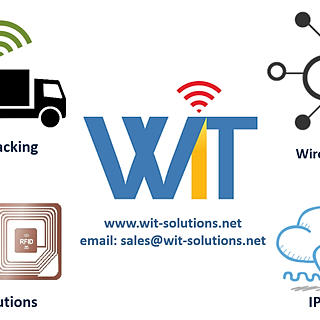Using RFID to Track Returnable Transport Items (RTIs)
- wit-tech
- Sep 5, 2022
- 3 min read
Tracking Returnable Transport Items (RTIs) with RFID Technology
Returnable Transport Items (RTI) are used for moving or transporting goods. RTIs are typically classified according to size, weight, application, or material and are often managed as exchangeable items rather than as individual assets. RTIs should be identified based on the asset ownership.

Returnable Transport Items (RTI) are used for moving or transporting goods. RTIs are typically classified according to size, weight, application, or material and are often managed as exchangeable items rather than as individual assets. RTIs should be identified based on asset ownership.
Companies can experience loss rates of 4-23%. This leads to wasteful spending practices—having to buy new RTIs to replace the lost ones and hire additional laborers to manage them
Witzense.com provides an RFID solution to track RTI (Returnable Transport Items)
RFID makes it possible to track your returnable transport items efficiently and accurately by automating the tracking process.
Recycle and extend life by ongoing Reuse
When discussing RTIs, the first point to note is their reusability. They eliminate the waste that one-way containers create and by doing so, give a much higher return on investment.
Consider two pallets, a $5 wooden pallet, and a $100 plastic pallet. While the wooden pallet is cheaper, it is essentially a single-use transport item and will therefore cost $5 per shipment. The plastic pallet is durable and will last significantly longer, and after the 20th shipment, it will have paid for itself.
To track Returnable/Reusable Transport Items, we use radio frequency identification (RFID) technology to help improve the management of assets. Our RFID solution identifies individual pieces of equipment and tracks them across different sites to ensure they are in the place where.
2 Steps
STEP 1: Each RTI is fitted with an RFID tag. The unique identification numbers of RTIs fitted with a tag are then detected by a small number of strategically placed readers. Advances in technology mean that it is no longer necessary to install readers at each doorway or choke point
STEP 2 Location information is sent back to our RFID portal where it can be analyzed. This database allows you to determine how many RTIs have been dispatched to a particular supplier or customer so you know which trading partner to contact for their return
Key Benefits
• Maximizes the use of your available RTIs
Helps prevent your assets from getting lost or stolen
Reduces disputes between trading partners about assets' locations
Enables inventories to be performed in minutes rather than days
Identifies shortages or oversized stock for better management
Get real-time Temperature and Humidity readings
What information can you get from the RFID scan?:
1) Individual asset characteristics, including status, size, location, and type
2) Unique asset history
3) Truck where it was loaded
4) RTI shrinkage rates
5) Shipping and receiving dates
6) Average RTI cycle duration
Saving Example
A typical supermarket chain may have 50,000 RTIS, each worth approximately $100 If they lose or misplace just 4% of RTI per year they have a loss of $200,000. With RFID we can reduce that to 1% saving the supermarket about $150,000 per year.
Integrating RFID technology into RTIs can deliver significant value to supply chain companies. By reducing the amount of shrinkage, companies can prolong the life of RTIs by ensuring that equipment doesn’t simply disappear from a location.
Also, real-time tracking eliminates the need for workers to track down items. Whether it’s boosting productivity or accounting for lost items, RFID makes it easy to save costs and maximize efficiencies.
RTI's We Track
Pallets of All Kinds
Rolling Cages
Dollies (Rolling Quarter Pallets)
Air Cylinders
Collapsible Crates
Stillage (Racks for Casks or Kegs)
Liquid Intermediate Bulk Containers
Bread Racks
Kegs
Plastic Dairy Crates
Meat Containers
Shelf-Ready Units
RTI Sacks
Gas cylinders
Liquid tanks
Contact us today for a free assessment www.witzense.com






Comments